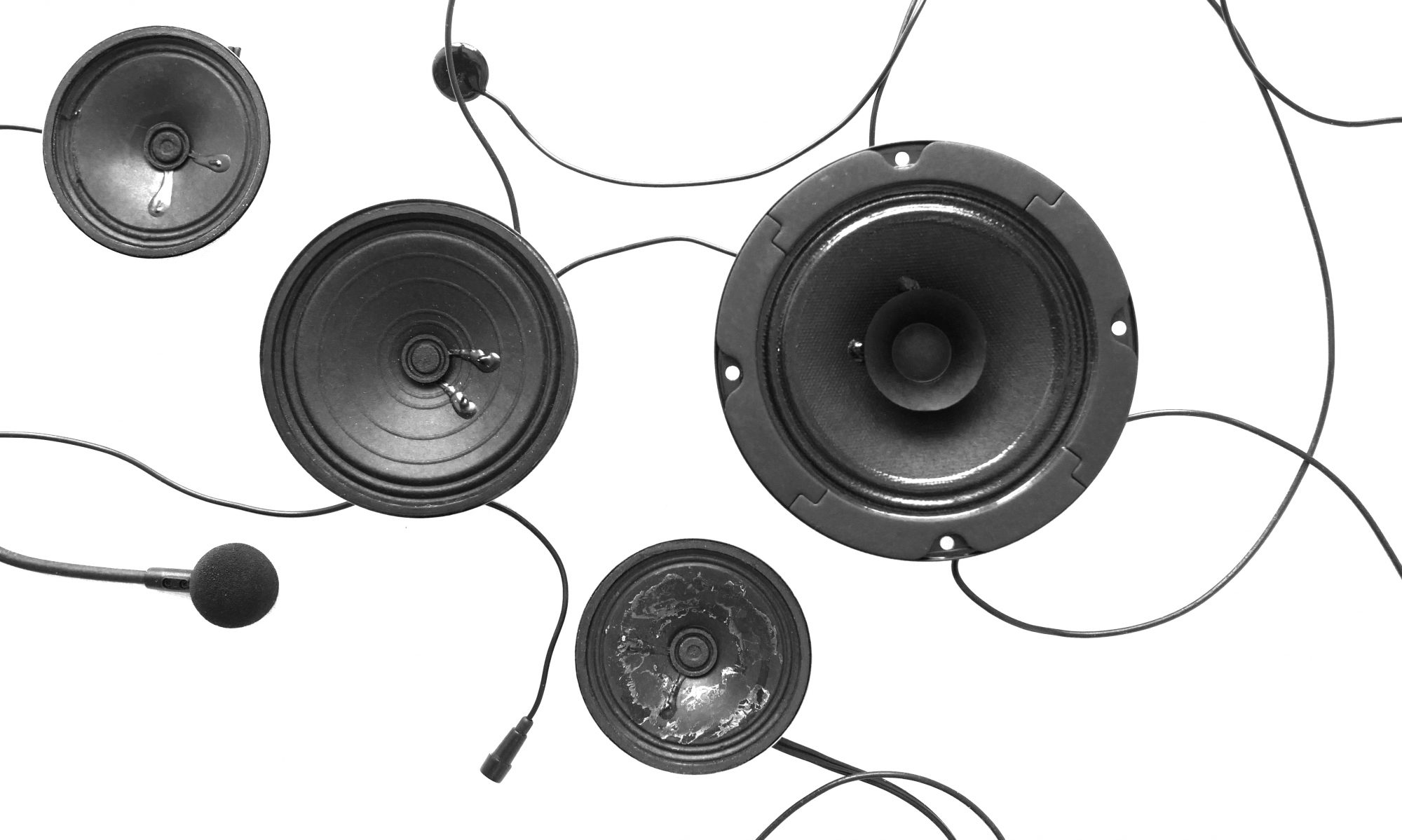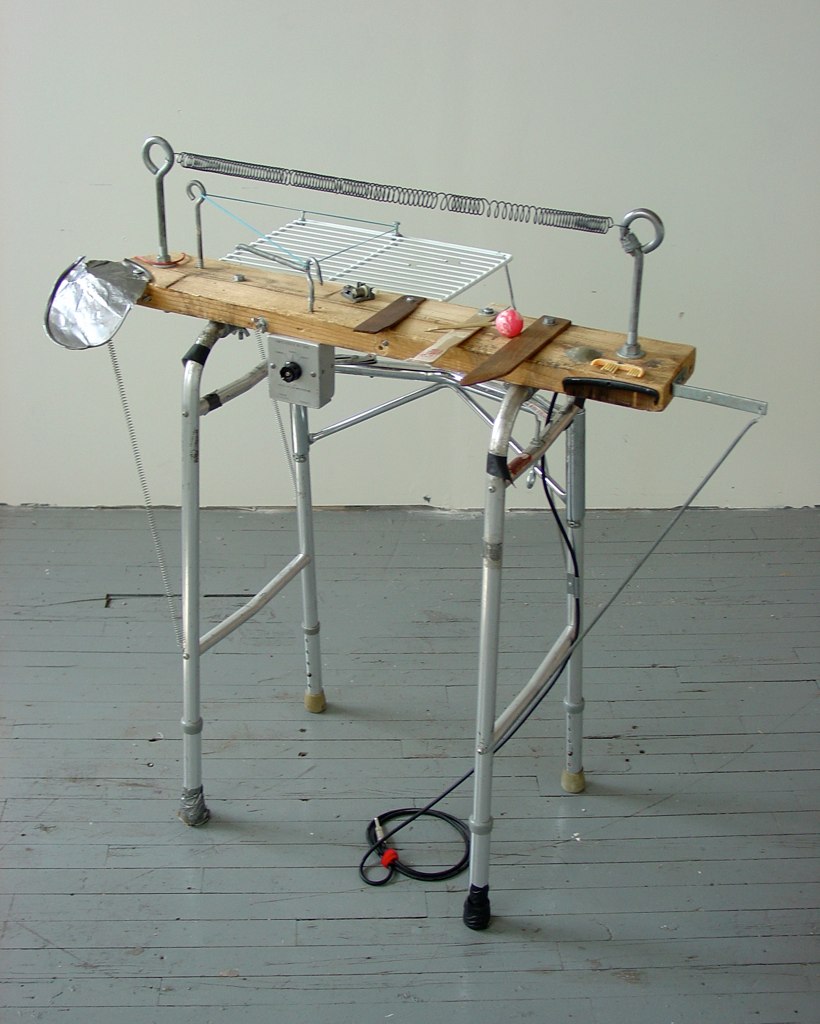
Eric Leonardson invented his Springboard in 1994. This instrument is an excellent example of how the simple addition of a contact microphone can create a beautiful sonic phantasmagoria out of ordinary objects. When you look at the instrument, you can see all kind of familiar objects such as pieces of wood, combs, coil springs, a metal grill, a tin can lid and large rubber bands. The sounds produced by these ordinary objects are often of a surprisingly complex and varied nature. When listening to a recording, it is difficult to recognise the source of the sound and without any visual cues it often remains a mystery, which object produced which sound. This recording of a concert with the Springboard in 2012 gives an impression of a composition developed from the sonic possibilities of the instrument:
The contrast between sight and sound is mainly created by using a single contact microphone to amplify the sounds produced by this instrument. The main part of the instrument is a simple piece of wood. As the drawings by Eric show, there is a hole drilled in this board for a recessed mounting of the piezo disk. An older hole (see previous cable in the first drawing) is not in use anymore. As Eric explains: “I originally drilled into the end of the board so I could pass an audio cable into the recess, similar to how a solid body electric guitar connects its coil to a jack. On the Springboard, the cable was soldered to a standard 1/4-inch jack and to the contacts of the piezo disc, inside the board. I abandoned that system because whenever I performed on the Springboard with more forceful percussive rhythmic patterns, the shaking would cause the audio plug to jiggle and momentarily break the connection, hence the audio output would be interrupted.”
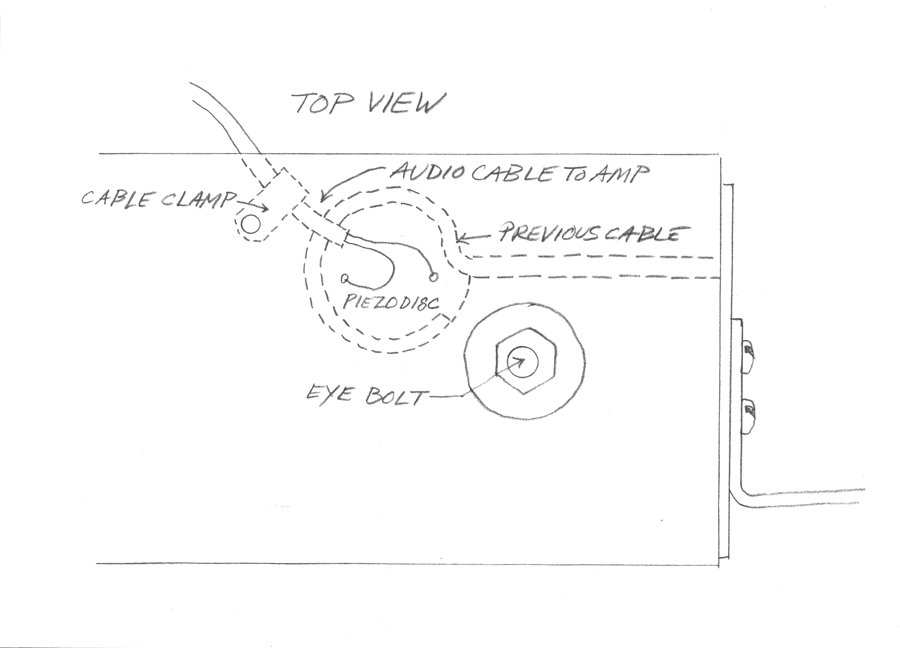
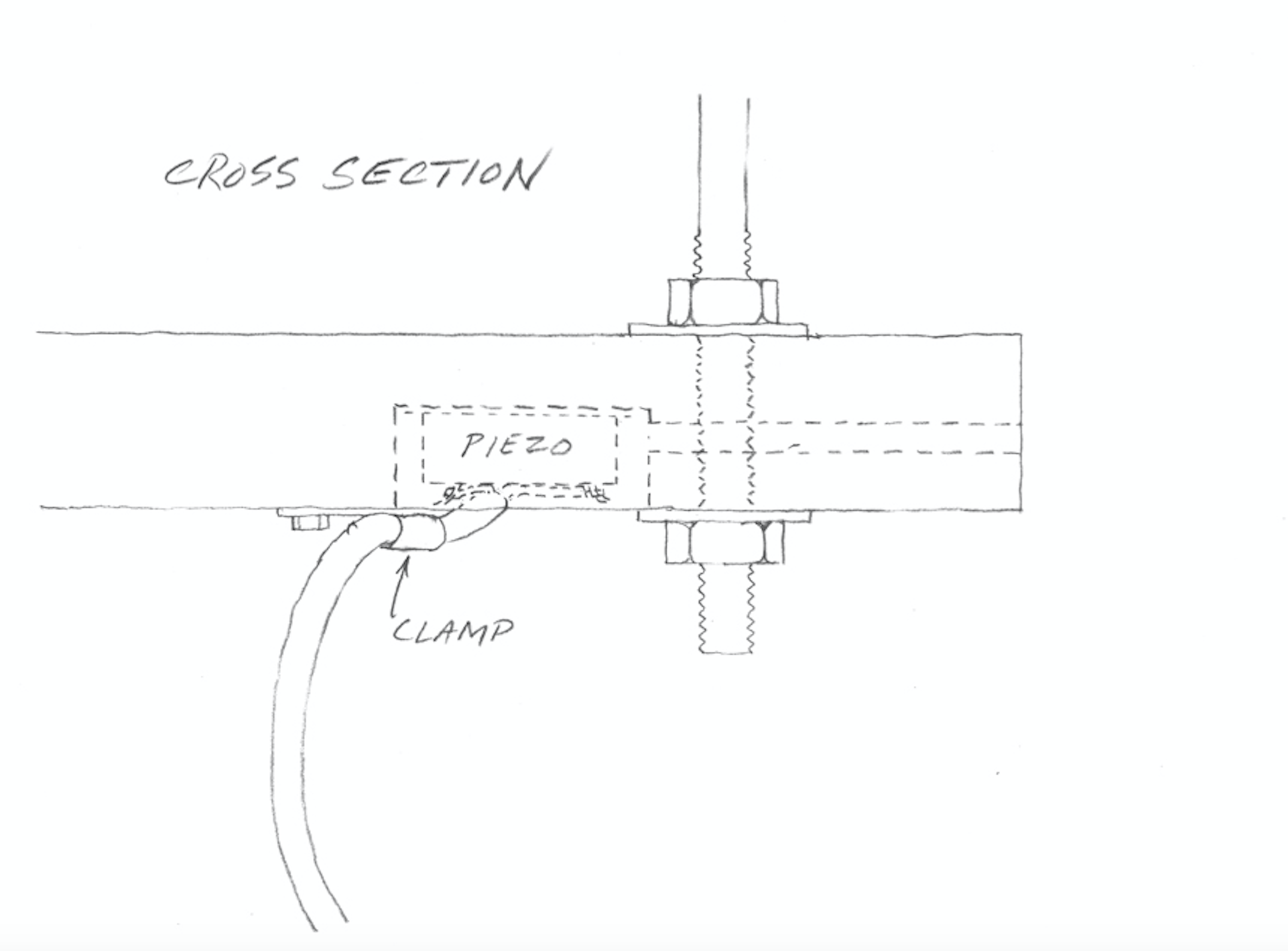
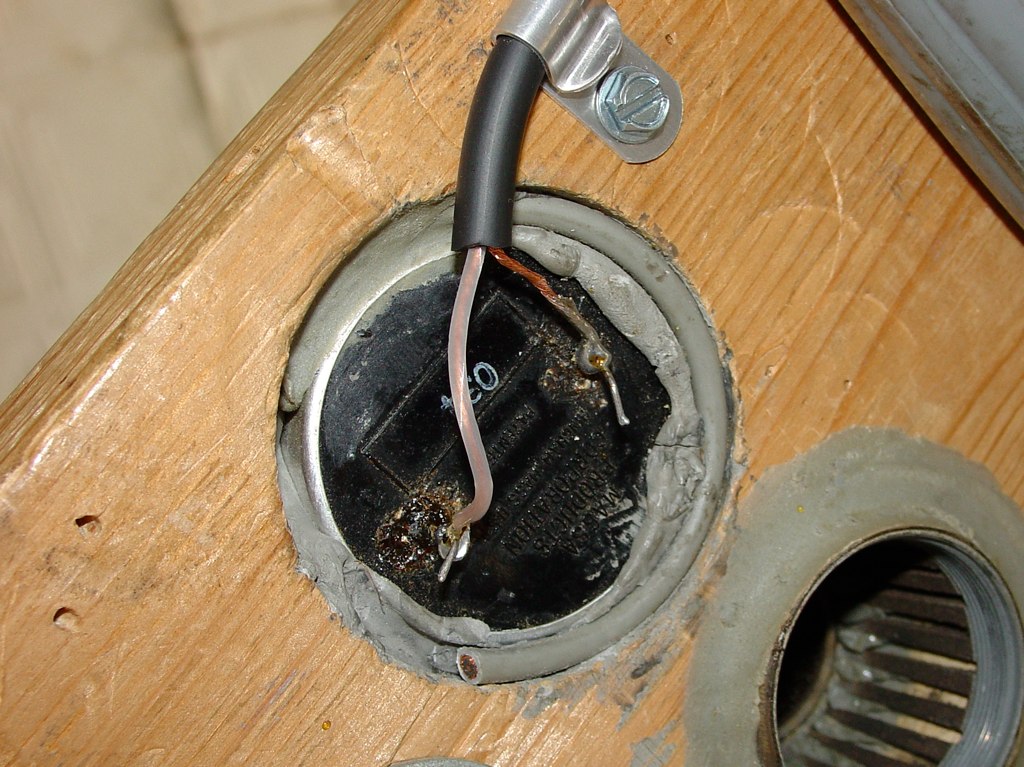
Since the contact microphone amplifies the mechanical vibrations of the object itself, the amplified sound is filtered more than in other forms of amplification. Contact microphones give you a different sonic perspective of an object, without changing their visual characteristics. As Eric phrases: “Its ability to act as an aural microscope into the unknown sonic yet entirely physical aspects of any object or material is truly exciting, if not amazing” (see The Springboard: The Joy of Piezo Disk Pickups for Amplified Coil Springs). He did not really plan to invent an instrument, but he was just looking for “a simple device for amplifying readily available objects and materials, producing a wide range of extraordinary sounds, in a way so tactile and immediate that the Springboard lent itself as easily playable” (see Eric Leonardson’s website on his Springboard, including information on all the objects he uses and how to make a similar instrument yourself). But as it turned out, his search for sounds resulted in a musical instrument nonetheless.
The contact microphone seems to have initiated a process of exploring all possible sounds. The richness of the instrument does not depend on the objects themselves, or the simple method of amplification, but on a very intense investigation of all different sonic possibilities of the everyday objects used. What makes this instrument so special is not the material or the form of amplification, but the playing techniques Eric developed: “I seldom ever hit any parts of the instrument as one hits a drum. Instead, bows, brushes, friction mallets, chopsticks, my bare hands and fingers apply controlled pressure, flexion, and friction to produce its most intriguing sounds. […] As with a stringed instrument, bowing produces a harmonically richer tone than plucking a string.”
Although nearly all sounds are produced solely by contact microphone amplification, there are a few exceptions. As you can see and hear in this documentation video of the Springboard by Joshua Baum, at around 3:04, the small music box is amplified by placing it on the board and, with the help of an effect pedal, its sound is transposed. Musically, the use of the effect pedal seems to be an enlargement of the coloured amplification by the contact microphone: the transposition is a sonic development of the filtering caused by the amplification.
Another element is Eric’s use of the reversibility of microphone and loudspeaker technologies. In this case, he uses another piezo disk, but connects it to the output of a small radio. This piezo disk now functions as a kind of tactile transducer, and can transmit its vibrations to the objects it touches. By placing it upon one of the objects of the Springboard, this object starts to vibrate, and these vibrations are amplified by the contact microphone. This effect can be heard at around 3:24 in the video above. Eric uses the tactile transducer as a kind of special mallet or bow, which allows him to play his instrument in yet another way. In the next video, Eric explains some of his playing techniques:
Eric regularly performs with other musicians, one of them is Birgit Ulher, who uses loudspeakers as a trumpet mute. In this video their performance as a duo starts at 40:00:
